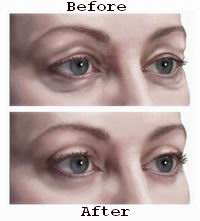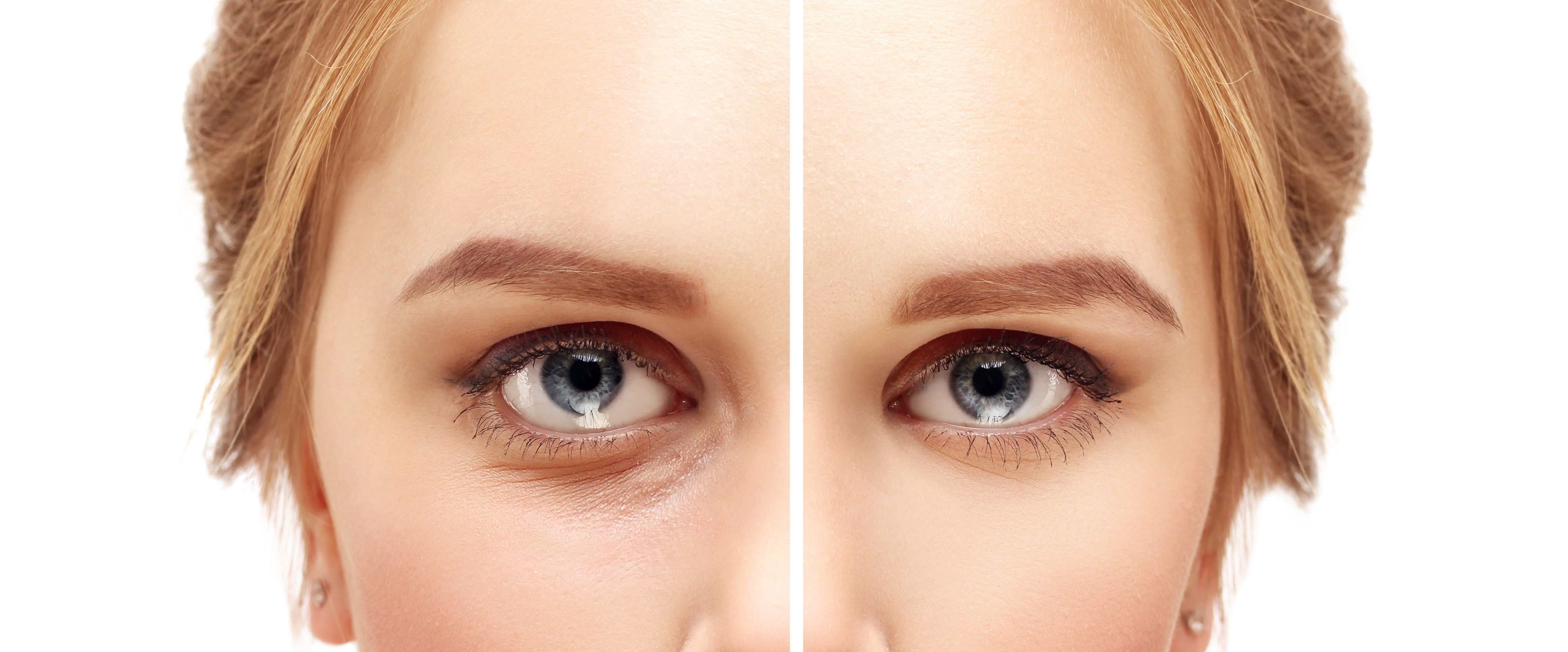
Blepharoplasty, commonly known as an eyelid lift, is a surgical procedure aimed at correcting defects, deformities, and disfigurations of the eyelids, as well as aesthetically modifying the eye region. This procedure involves the removal of excess skin, muscle, and sometimes fat from the upper and/or lower eyelids to improve both the function and appearance of the eyes.
As we age, the skin around the eyes loses elasticity, muscles weaken, and fat deposits may either herniate or diminish. These changes lead to sagging upper eyelids and puffiness or bags under the eyes, which not only affect appearance but can also impair vision in severe cases. Blepharoplasty restores a youthful, refreshed look, enhancing one’s overall facial harmony.
Beyond cosmetic enhancement, this procedure can improve peripheral vision compromised by drooping eyelids, alleviate discomfort from heavy eyelids, and address medical conditions like ptosis or eyelid malposition.

The primary cause driving the need for blepharoplasty is the natural aging process, but various factors contribute to the changes that make eyelid surgery necessary.
Aging and Skin Changes
- Loss of Skin Elasticity: Collagen and elastin fibers degrade with age, causing the skin to become loose and saggy.
- Muscle Weakness: The orbicularis oculi muscle around the eyelids weakens, reducing eyelid support.
- Fat Redistribution: Fat pads that cushion the eye can herniate forward, leading to puffiness or "bags" under the eyes.
- Thinning Skin: Skin becomes thinner and more fragile, prone to wrinkles and folds.
Genetic and Environmental Factors
- Genetics: Some individuals inherit predispositions for drooping eyelids or puffiness at a younger age.
- Sun Exposure: UV radiation accelerates skin aging, leading to premature wrinkling and laxity.
- Smoking: Reduces blood supply and promotes tissue degradation.
- Lifestyle: Poor nutrition, lack of sleep, and chronic stress can worsen eyelid appearance.
Medical and Anatomical Conditions
- Dermatochalasis: Excess skin on the upper eyelids that may obstruct vision.
- Ptosis: Drooping of the upper eyelid due to levator muscle dysfunction.
- Eyelid Malposition: Conditions like ectropion (outward turning) or entropion (inward turning) sometimes require surgical correction along with blepharoplasty.
- Thyroid Eye Disease: Can cause swelling and retraction of eyelid tissues.
Patients who may benefit from blepharoplasty often report and present the following signs and symptoms:
Visual Symptoms
- Obstruction of Upper Visual Field: Excess skin drooping over the eyelashes may block peripheral vision, causing difficulty in reading, driving, or other activities.
- Eye Strain and Fatigue: Effort to lift drooping lids can cause forehead muscle overuse, leading to headaches.
Cosmetic Concerns
- Droopy Upper Eyelids: Excess skin folds create a tired or aged appearance.
- Puffy Lower Eyelids: Fat deposits create bags or bulges below the eyes.
- Wrinkles and Fine Lines: Crow’s feet and skin creases near the eyelids.
- Dark Circles: Often associated with thinning skin and shadows under the eyes.
- Facial Asymmetry: Uneven eyelids due to fat or skin differences.
Physical Examination Findings
- Excess Skin and Fat: Visible and palpable on the eyelids.
- Reduced Lid Tone: Weakness in eyelid muscles.
- Eyelid Margin Position: Measured to assess ptosis or malposition.
- Tear Film Assessment: To ensure adequate eye lubrication.
Proper diagnosis is critical for successful treatment planning. It includes:
Clinical Evaluation
- Detailed patient history including visual symptoms, prior eyelid surgeries, and general health.
- Physical examination of eyelid anatomy, skin quality, muscle function, and eye health.
- Evaluation of vision field to assess any obstruction caused by drooping lids.
- Photographic documentation to plan surgical approach and for comparison postoperatively.
Diagnostic Tests
- Detailed patient history including visual symptoms, prior eyelid surgeries, and general health.
- Physical examination of eyelid anatomy, skin quality, muscle function, and eye health.
- Evaluation of vision field to assess any obstruction caused by drooping lids.
- Photographic documentation to plan surgical approach and for comparison postoperatively.
Specialized Tests
- Visual Field Testing: Automated perimetry to quantify vision impairment from eyelid sagging.
- Eyelid Measurements: MRD1 (margin reflex distance), levator function, and skin fold height.
- Ophthalmologic Exam: To rule out dry eye or other ocular conditions that may affect surgery.
- Imaging Studies: Rarely needed but can be used in complex or traumatic cases.
Blepharoplasty techniques vary based on the patient’s anatomy and goals.
Upper Eyelid Blepharoplasty
- Incision Placement: In the natural eyelid crease for minimal visible scarring.
- Tissue Removal: Excess skin, fat pads, and sometimes muscle are excised or repositioned.
- Outcome: Lifts and tightens the upper eyelids, improving field of vision and appearance.
Lower Eyelid Blepharoplasty
- Transconjunctival Approach: Incision inside the lower eyelid to remove or reposition fat without external scars; ideal for patients with good skin elasticity.
- Subciliary Approach: Incision just below the eyelashes to remove skin, muscle, and fat for patients with skin laxity.
- Canthoplasty or Canthopexy: Procedures to tighten the eyelid margin, preventing ectropion.
Combined Procedures
Many patients undergo both upper and lower blepharoplasty for balanced rejuvenation.
Anesthesia
Typically performed under local anesthesia with sedation or general anesthesia depending on the extent and patient preference.
Adjunctive Techniques
- Laser Resurfacing: To improve skin texture and wrinkles.
- Fat Grafting: To restore volume lost with aging.
- Botulinum Toxin: Sometimes used postoperatively for fine lines.
Prevention Strategies
- Protect eyelids from sun with sunglasses and sunscreen.
- Avoid smoking and ecessive alcohol consumption.
- Maintain a healthy diet and hydration.
- Use quality skincare for the delicate eyelid area.
- Manage allergies and avoid rubbing eyes.
Preoperative Management
- Stop blood thinners and supplements that increase bleeding risk.
- Avoid alcohol and smoking before surgery.
- Plan for postoperative care including rest and limited activity.
Postoperative Care
- Cold compresses to reduce swelling.
- Keeping head elevated during sleep.
- Follow medication instructions (antibiotics, anti-inflammatory).
- Avoid strenuous activities for 2-4 weeks.
- Attend follow-up appointments to monitor healing.
Though generally safe, possible complications include:
- Bruising and Swelling: Common but temporary.
- Dry Eyes or Excessive Tearing: Usually transient.
- Infection: Rare with proper sterile technique.
- Asymmetry: Minor differences may occur; significant cases may require revision.
- Eyelid Malposition: Including ectropion or lagophthalmos (incomplete eyelid closure).
- Scarring: Typically minimal, hidden in natural creases.
- Vision Changes: Rare, urgent care needed if sudden vision loss occurs.
- Hematoma: May require drainage.
Preoperative Preparation
- Discuss medications, allergies, and expectations thoroughly.
- Avoid blood thinners and supplements that increase bleeding risk.
- Arrange for transportation and assistance post-surgery.
Postoperative Recovery
- Mild discomfort, swelling, and bruising last 1-2 weeks.
- Avoid rubbing eyes and strenuous activities.
- Follow-up visits monitor healing and manage complications.
Long-Term Outcomes
- Results are long-lasting, often 7-10 years or more.
- Natural aging continues, but surgery slows visible signs.
- Maintenance treatments like Botox or fillers may complement results.
1. What is blepharoplasty?
Blepharoplasty, commonly known as an eyelid lift, is a surgical procedure designed to improve the appearance of the eyelids by removing excess skin, muscle, and sometimes fat. It can be performed on the upper eyelids, lower eyelids, or both to rejuvenate the eye area and improve vision in some cases.
2. Who is a good candidate for blepharoplasty?
Ideal candidates are adults with sagging or drooping eyelids, puffiness, or bags under the eyes who are in good health and have realistic expectations. Candidates should be nonsmokers or willing to quit and have no active eye infections or serious medical conditions.
3. What are the types of blepharoplasty?
- Upper eyelid blepharoplasty: Removes excess skin and fat from the upper eyelid.
- Lower eyelid blepharoplasty: Targets puffiness and bags under the eyes, removing or repositioning fat and tightening skin.
- Transconjunctival blepharoplasty: Fat removal through the inner eyelid without external incisions, typically for younger patients.
4. How is blepharoplasty performed?
Blepharoplasty is usually done under local anesthesia with sedation or general anesthesia. The surgeon makes precise incisions along natural creases or inside the eyelid, removes excess tissue, and closes the incisions carefully to minimize scarring.
5. What is the typical recovery time after blepharoplasty?
Most patients experience swelling and bruising for 1-2 weeks. Many return to normal activities within 10-14 days, though complete healing and final results may take several months.
6. Are blepharoplasty results permanent?
Results are long-lasting but not entirely permanent, as natural aging continues. Most patients enjoy the benefits for 5-10 years or more, with many feeling younger and more refreshed.
7. What risks or complications are associated with blepharoplasty?
Risks include infection, bleeding, dry eyes, difficulty closing the eyes, scarring, asymmetry, or changes in eyelid sensation. Choosing an experienced surgeon reduces risks.
8. Will blepharoplasty improve my vision?
In some cases, excess upper eyelid skin can impair vision. Blepharoplasty removes this obstruction and can improve peripheral vision when drooping eyelids interfere with sight.
9. Can blepharoplasty be combined with other facial procedures?
Yes, it’s often combined with procedures like brow lifts, facelifts, or laser skin resurfacing for a more comprehensive facial rejuvenation.
10. How do I prepare for blepharoplasty surgery?
Preparation includes a medical evaluation, avoiding blood thinners or certain medications, quitting smoking, and arranging for post-surgery care and transportation.
The other Cosmetic Procedures are:
Few Popular Hospitals for Blepharoplasty or Eyelid Lift are:
Thailand, Malaysia, Singapore, Turkey and India are the most cost effective locations that offer up to almost 80% savings in comparison to the US.
SurgeryPlanet facilitates a plethora of services to the medical treatment traveler also which includes, a hassle free and discounted travel option, a welcome hand at the airport on arrival, travel in an air-conditioned car, round the clock service & support. Your medical evaluation is pre arranged with the least of waiting time. Once your assessment is complete and found medically fit, the procedure is immediately scheduled without a waiting period. Please read through our Services and Testimonials to understand and select your best options.
Major Treatments Abroad: Obesity / Bariatric Surgery | Spine Surgery | Stem Cell therapy | Fertility treatment | Knee replacement in India and Thailand | Heart Surgery | Organ transplant | Ayurveda Treatment | Heart valve replacement | Hip resurfacing | Hospitals in India and Thailand for Laparoscopic Sterilization| Best hospitals in Asia | JCI & ISO certified Hospitals | Cost effective medical procedures | Healthcare tourism | Complete privacy for affordable cost | Weight loss procedures | Infertility treatment | Board certified physicians | Low cost surgeries
SurgeryPlanet is an Healthcare Facilitator and not a Medical service provider. The information provided in this website is not to be used for diagnosis or treatment of any medical condition or use for any medical purposes. We provide information solely for medical travel facilitation and do not endorse any particular health care provider, hospital, facility, destination or any healthcare service or treatment listed. We are not an agent for, or affiliated to any health care provider, or service listed in our website and is not responsible for health care services provided by them. Choice of hospital or doctor for your healthcare services is your independent decision. Consult your domestic licensed health care provider before seeking the services of any health care provider you learn about from our website.


